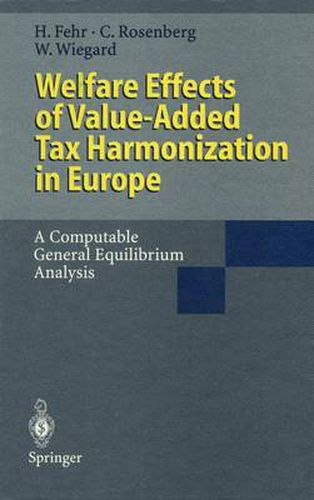Readings Newsletter
Become a Readings Member to make your shopping experience even easier.
Sign in or sign up for free!
You’re not far away from qualifying for FREE standard shipping within Australia
You’ve qualified for FREE standard shipping within Australia
The cart is loading…






This title is printed to order. This book may have been self-published. If so, we cannot guarantee the quality of the content. In the main most books will have gone through the editing process however some may not. We therefore suggest that you be aware of this before ordering this book. If in doubt check either the author or publisher’s details as we are unable to accept any returns unless they are faulty. Please contact us if you have any questions.
This book uses a computable general equilibrium framework to eval uate recent value-added tax reform proposals in the European Union from a welfare point of view. After the publication of the White Paper (1985) on the completion of the internal European market, an intense and heated debate about tax impediments to free trade set in. According to the original plans of the Commission of the European Union, not only physical border controls but also fiscal frontiers within the European Union would have been abolished on New Year’s Day 1993. With respect to value added taxation this amounted to replacing the destination by the origin principle. Even though the origin principle had been favored by some economists from the establishment of a common European value-added tax system, time was not yet ripe for this change. In December 1991, the ECOFIN Council could only agree on the so called transitional system. In essence, these transitional arrangements maintain the destination principle as far as possible but shift the border tax procedure from national frontiers to firms. The transitional system is supposed to expire on December 31, 1996, with the final solution for value-added taxation in the European Union being decided upon by the ECOFIN Council until December, 1995. In the event of no decision the transitional arrangements will be continued. The most likely solution will be a switch to the origin principle combined with some clearing mechanism to prevent major revenue reallocations between member states.
$9.00 standard shipping within Australia
FREE standard shipping within Australia for orders over $100.00
Express & International shipping calculated at checkout
This title is printed to order. This book may have been self-published. If so, we cannot guarantee the quality of the content. In the main most books will have gone through the editing process however some may not. We therefore suggest that you be aware of this before ordering this book. If in doubt check either the author or publisher’s details as we are unable to accept any returns unless they are faulty. Please contact us if you have any questions.
This book uses a computable general equilibrium framework to eval uate recent value-added tax reform proposals in the European Union from a welfare point of view. After the publication of the White Paper (1985) on the completion of the internal European market, an intense and heated debate about tax impediments to free trade set in. According to the original plans of the Commission of the European Union, not only physical border controls but also fiscal frontiers within the European Union would have been abolished on New Year’s Day 1993. With respect to value added taxation this amounted to replacing the destination by the origin principle. Even though the origin principle had been favored by some economists from the establishment of a common European value-added tax system, time was not yet ripe for this change. In December 1991, the ECOFIN Council could only agree on the so called transitional system. In essence, these transitional arrangements maintain the destination principle as far as possible but shift the border tax procedure from national frontiers to firms. The transitional system is supposed to expire on December 31, 1996, with the final solution for value-added taxation in the European Union being decided upon by the ECOFIN Council until December, 1995. In the event of no decision the transitional arrangements will be continued. The most likely solution will be a switch to the origin principle combined with some clearing mechanism to prevent major revenue reallocations between member states.